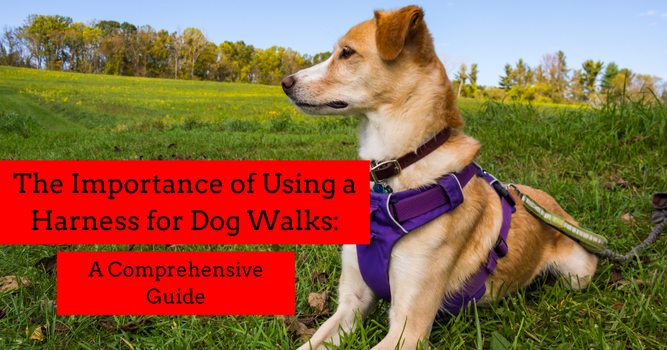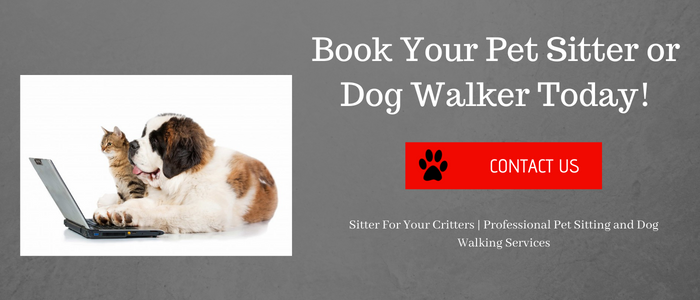The Importance of Using a Harness for Dog Walks: A Comprehensive Guide

Walking your dog is more than just a daily routine; it’s an essential activity that ensures your dog gets the exercise, mental stimulation, and quality time they need to live a happy and healthy life. The choice of walking equipment can significantly impact the experience for both you and your dog. While traditional collars have been a staple for many pet owners, an increasing number of dog lovers are now turning to harnesses. This shift is not merely a trend but a movement towards safer, more comfortable, and effective dog handling practices. Let’s delve into why using a harness is crucial for dog walks.
Enhanced Safety
One of the most compelling reasons to use a harness is its increased safety. Traditional collars, especially when used with energetic or easily distracted dogs, can put undue pressure on the dog’s neck. This can lead to potential injuries, including tracheal collapse, particularly in breeds predisposed to such issues. A harness distributes pressure more evenly across the chest and shoulders, significantly reducing the risk of injury. By avoiding strain on the neck, harnesses provide a safer alternative, allowing you to enjoy worry-free walks with your dog.
Improved Control
Controlling a dog, especially a large or very active one, can be challenging with a collar. A harness offers a superior solution by providing multiple attachment points, including a front clip that can help deter pulling by redirecting the dog back toward you. This improved control is not just beneficial for managing your dog but also contributes to the safety of your surroundings, preventing your dog from chasing squirrels and other distractions. A harness makes it easier to guide your dog, ensuring both of you have a pleasant and safe walking experience.
Comfort for Your Dog
Comfort is crucial during walks, and harnesses excel in providing it. H harnesses distribute pressure more evenly than collars, which can create localized pressure around the neck. This is especially important for dogs who pull, as the reduced pressure decreases their discomfort and potential for injury. Additionally, many harnesses are designed with padding to offer extra comfort and prevent rubbing or chafing. Ensuring your dog is comfortable can make walks more enjoyable and encourage them to stay active and engaged.
Training Assistance
For those in the midst of training their dogs, a harness can be a valuable tool. The added control and redirection capabilities of a front-clip harness can be particularly effective in teaching dogs not to pull on the leash. This can make walks more enjoyable for both you and your dog and significantly accelerate the training process by encouraging proper leash behavior. A harness can help reinforce positive behavior, making training sessions more productive and less stressful.

Preventing Escapes
Dogs, especially those skilled in the art of escape, can sometimes wriggle out of collars, putting themselves in danger. A well-fitted harness is much harder to escape from, as it encompasses more of the body. This can provide peace of mind during walks, particularly in busy or potentially hazardous environments. A secure harness ensures that your dog stays safely by your side, preventing unwanted escapes and ensuring their safety.
Health and Behavior Considerations
A harness is not just recommended but necessary for dogs with certain health issues, such as neck injuries or respiratory problems. Additionally, dogs who are prone to respiratory difficulties, like brachycephalic breeds (those with short noses and flat faces, such as Pugs and Bulldogs), can benefit from the reduced neck pressure that a harness provides. Harnesses can also positively affect your dog’s behavior. The sense of security a harness provides can be particularly beneficial for anxious dogs, making walks less stressful for them and enhancing their overall well-being.
Choosing the Right Harness
The benefits of using a harness are clear, but selecting the right one for your dog is important. Here are a few tips:
- Fit is Crucial: A poorly fitting harness can cause discomfort or even injury. Ensure the harness is snug but not tight, with enough room to fit two fingers between the harness and your dog’s body.
- Consider Your Dog’s Size and Strength: Larger, stronger dogs may require a more robust harness with wider straps.
- Look for Adjustability: An adjustable harness can grow with your dog and accommodate weight changes.
- Reflective Materials for Visibility: If you often walk your dog in low-light conditions, a harness with reflective material can help keep you both safe.
My Favorite Harnesses
Front Range Harness
The Front Range Harness is renowned for its control and training capabilities. It features a velvet-lined chest strap to prevent rubbing and discomfort, even with dogs that pull. The unique design includes two connection points: one on the back for standard walking and one on the chest for training or additional control. This versatility makes it an excellent choice for owners working on leash training or managing strong pullers. I really like that it’s easy to put on—just slip it over your dog’s head, reach under your dog’s belly, and snap in the two buckles on either side. Click, click, and you’re ready to head out.
Perfect Fit Harness
The Perfect Fit Harness lives up to its name by offering an unparalleled level of adjustability and comfort. It is designed to fit any dog perfectly, as it comes in multiple sizes and each piece can be purchased separately to fit your dog’s unique shape. This level of customization ensures that the harness is always snug, providing safety without sacrificing comfort. The fleece lining reduces friction points, making it ideal for dogs with sensitive skin or those prone to chafing.
Why Choose These Harnesses?
The Front Range and Perfect Fit Harnesses stand out for several reasons:
- Customization and Fit: These harnesses cater to the unique size and shape of your dog, ensuring a comfortable and secure fit.
- Quality Materials: They are made from durable, high-quality materials that can withstand the wear and tear of daily walks.
- Dog Comfort: Designed with your dog’s comfort in mind, these harnesses feature padding and ergonomic designs to prevent discomfort.
- Owner Convenience: Easy to put on and take off, these harnesses make the pre-walk routine seamless and stress-free.
Conclusion
The shift towards harnesses for dog walking reflects a broader move towards more humane, safe, and effective pet care practices. By choosing the right harness, you’re not just choosing better control or comfort; you’re making a choice for your dog’s overall well-being and happiness. Whether you opt for the Front Range, Perfect Fit, or another high-quality harness, the key is to select a model that suits your dog’s specific needs, ensuring that every walk is as enjoyable and beneficial as it can be. In doing so, you deepen the bond with your furry friend, making each step together a step towards a happier, healthier life for them.
